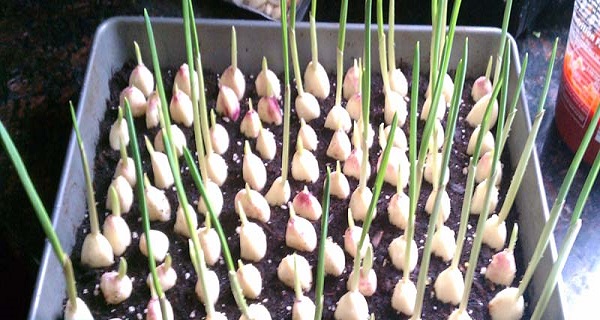Garlic is one of the best food flavorings – it has a great aroma and certainly improves the taste of our meals. Did you know that you can grow your own garlic at home?
Why grow garlic at home?
The best part about garlic is that it can be used in different ways. It can be used in numerous dishes, but also as a natural remedy. Having homegrown garlic will always come in handy.
Immune system
Garlic is a superfood that can strengthen your immune system and prepare it to fight diseases. According to research, taking garlic supplements every day can reduce your chances of catching colds or the flu by 63%, and garlic can also help you treat Staph infections with ease. A homemade garlic oil can boost the healing of ear infections.
Cardiovascular health
Combining garlic with other foods can reduce your cholesterol levels and prevent its accumulation in the blood vessels, which will reduce the risk of heart attacks and stroke. Garlic can also lower your high blood pressure by 8%.
Cancer prevention
According to several studies, eating garlic regularly can reduce the risk of stomach, colorectal and liver cancer. Watch the video below for more information on how garlic prevents cancer:
How to grow garlic at home
Garlic is not difficult to grow at home – whether you have space for a few plants or you have your own garden, the herb can be grown with ease.
When planting, always go for organic garlic – it’s much better for your overall health and doesn’t contain harmful chemicals. Here’s a step-by-step guide on growing your own garlic:
- Plant the garlic before the ground is frozen – we recommend starting in October;
- Use loose and fertile soil and top it with 2-3 inches of organic matter. The shallow furrows should be 6 inches apart;
- Break a larger garlic head and use only large heads for planting;
- Plant the cloves 2 inches apart, and about 4 inches apart in the furrows. The pointy end of the clove should be facing up;
- Fill the holes with dirt and water, then add some dead leaves or compost;
- Fertilize your garlic in spring. Water the soil when it’s dry, and clip any growing flowers;
- Keep track of the leaves – when the produce has 5-6 leaves, it’s time to pull it out.
The produce can be eaten immediately after harvest. Of course, wash it well before you eat it, and keep it in a dark and well aired spot. Enjoy!
Source: familylifegoals.com
